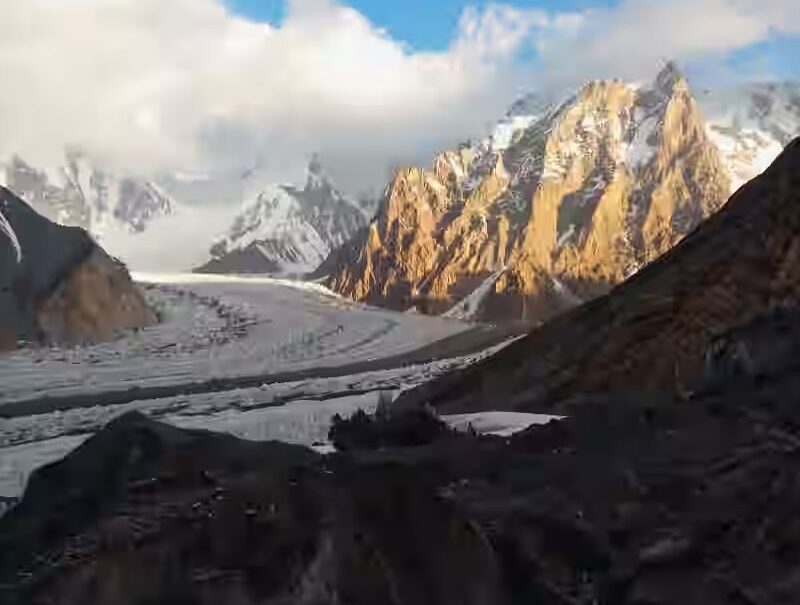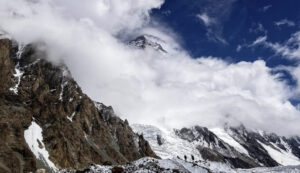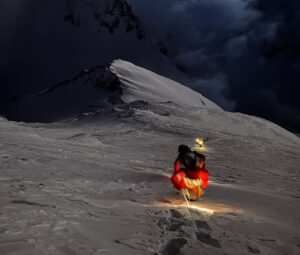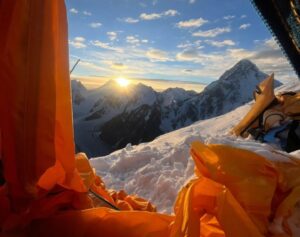As usual, climbers are advancing on Broad Peak before anyone tackles K2. But conditions during a particularly hot and dry season are making the going hazardous.
Lukasz Supergan of Poland has been up to 6,000m, above Camp 1, on a first acclimatization round. He reports how high temperatures are negatively affecting the route.
“[Above Camp 1,] we climbed a steep slope between brittle rocks in the middle of the night. High temperatures mean that we are not climbing in comfortable snow but on ramps covered in ice, on which there is a thin layer of ‘sugar,’ in which crampons have little grip.”
The dry terrain also features unstable rock between Base Camp and Camp 1.
“I was standing at the base of the wall when a rock the size of a large microwave hit my friend who was descending with me,” Supergan wrote. That made him decide to climb during the night and avoid the warmest hours of the day.
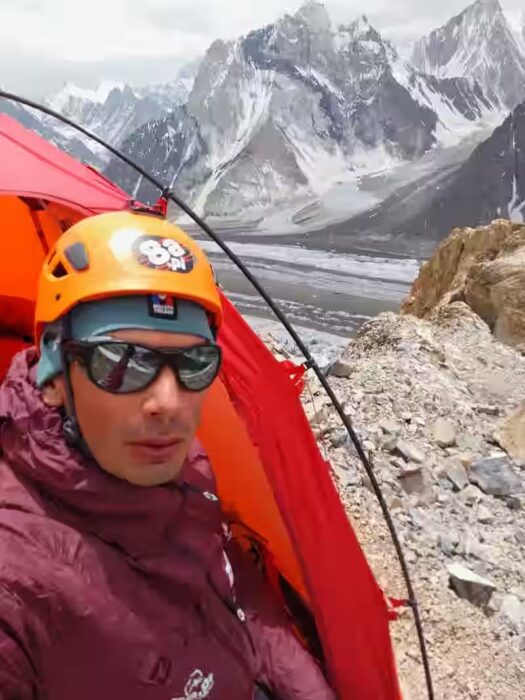
Lukasz Supergan at an alarmingly dry Camp 1 on Broad Peak. Photo: Supergan
Supergan, who climbs without oxygen or a personal guide, attempted Gasherbrum II last year but had to turn around, again due to bad conditions from high temperatures.
This year, he is climbing with Seven Summit Treks in a team of 12 climbers, including some independents like himself. A guided group and the rope fixers are ahead of them. Supergan carries his own gear but has used the fixed ropes on the most difficult sections. Overall, there is a relatively low number of visitors in Pakistan this season.
Why Broad Peak first
Broad Peak offers a convenient, safe way for climbers to acclimatize (and to bag a summit if they have signed onto a K2-Broad Peak double-header). The logistics on Broad Peak are simpler, as the normal route requires only three altitude camps, while 8,611m K2 typically needs four. The normal route on 8,051m Broad Peak is a shorter, more straightforward climb from Base Camp to the start of the summit ridge.
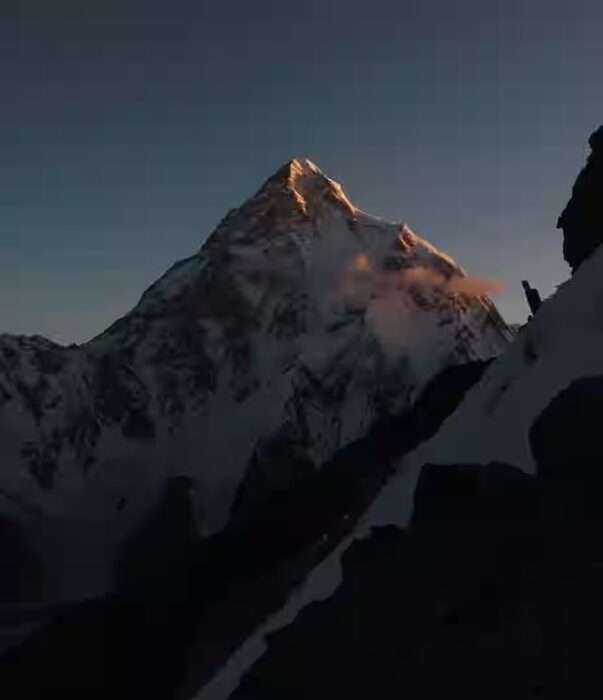
K2 from Broad Peak. Photo: Lukasz Supergan
Typically, porters fix until Camp 3 (about 7,100m) and eventually to the col that marks the start of the ridge at 7,600m. That allows complete acclimatization, usually done without supplementary oxygen, on mostly easy terrain.
Once acclimatized, climbers can either summit Broad Peak — often right behind the rope-fixers — or turn to K2 if conditions are good and the route is prepared. K2 is a harder mountain, with no easy sections. As on Everest, where climbers try to cross the Khumbu Icefall as few times as possible, climbers with a permit for Broad Peak try to do all their acclimatizing there, and then head to do K2 in a single summit push. They usually use bottled oxygen on K2 from Camps 2 or 3.
Unfortunately, conditions on Broad Peak this year are not ideal, with broken glaciers at the base and dry sections prone to rockfall between Camp 1 and Camp 2.
